Inside the sky-high kitchen revolution where fine dining meets flight.
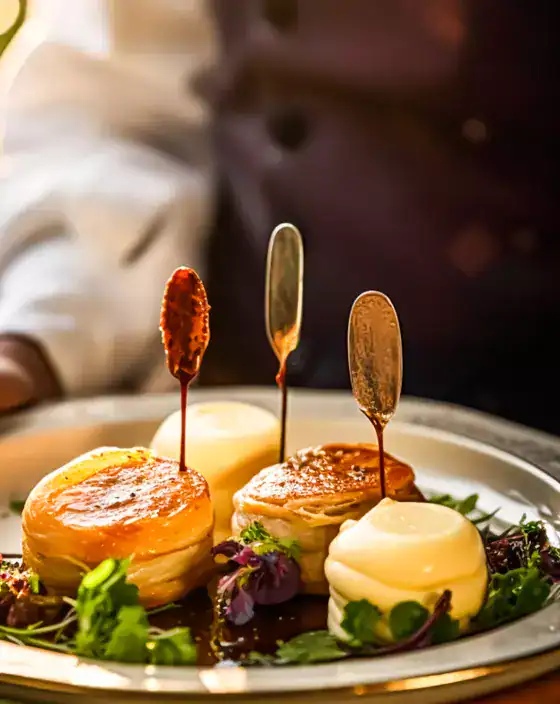
It is two in the morning at a major airport flight kitchen. The air is filled with the scent of freshly baked bread, caramelised sugar from a crème brûlée being torched, and crisp micro-greens arriving in chilled crates. Chefs in white jackets move with precision, garnishing dishes, sealing trays, and scanning QR codes before they head to the tarmac.
For decades, “airline food” carried a reputation for blandness. Tight budgets, mass production, and the challenges of cooking for thousands made it functional but forgettable. That image is changing fast. Airlines, especially in premium cabins, now see food as a brand-defining feature, and even economy meals are improving.
The shift comes from advances in food science and design. Chefs develop dishes that retain flavour and texture after blast-chilling, refrigeration, and galley reheating. High-humidity packaging and precise cooking times help deliver tender meats, vibrant vegetables, and fresh-tasting sauces at altitude. Celebrity chef partnerships add both expertise and marketing appeal, creating menus engineered for taste in a cabin environment where our senses are dulled by up to 30 percent.
Flight kitchens now blend artisanal cooking with industrial efficiency, producing tens of thousands of meals daily. Technology underpins the process, with QR-coded tracking, menu rotation systems, and strict safety controls ensuring consistency and compliance.
This is no longer a hidden backroom operation. It is the frontline of a gourmet revolution in the sky, where a well-crafted meal can be as memorable as the destination. At 35,000 feet, taste has finally taken flight.
The Taste Challenge at Altitude
Eating at 35,000 feet is not the same as dining in a restaurant on the ground. The aircraft cabin is a unique environment that alters how we perceive flavours, aromas, and even textures. Studies conducted by the Fraunhofer Institute for Building Physics in Germany and commissioned by Lufthansa have shown that at typical cruising altitudes, the reduced air pressure and humidity inside the cabin can dull our sense of taste and smell by as much as 30 percent.
Cabin air humidity is usually below 12 percent, drier than most deserts on Earth. This dryness affects our nasal passages and taste receptors, making it harder to detect subtle flavours, particularly sweetness and saltiness. At the same time, cabin noise from engines and airflow, averaging around 85 decibels, has been found in research to further influence flavour perception, reducing our ability to detect sweetness while enhancing umami-rich tastes. This is why tomato juice, rich in umami compounds, is surprisingly popular on flights even among passengers who rarely drink it on the ground.
To counteract these effects, airline chefs often adjust recipes to boost certain taste components. Acidity from citrus, vinegar, or wine, as well as umami from ingredients like mushrooms, soy sauce, or aged cheese, can help flavours remain vibrant at altitude. Spices and aromatics are also used more assertively, but without overpowering the dish.
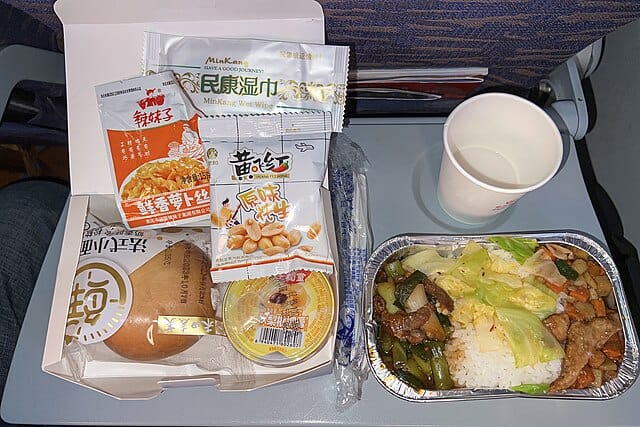
Cooking on board is not possible in the traditional sense. Open flames are prohibited for safety reasons, and galleys are equipped only with convection ovens and occasionally steam ovens. This means all hot meals are fully cooked in the catering kitchen, then rapidly chilled to safe temperatures, a process known as blast chilling, to preserve freshness and prevent bacterial growth. They are stored in chilled trolleys until they are loaded onto the aircraft, where they are reheated just before service.
Reheat constraints are significant. In premium cabins, the crew may reheat components separately to preserve texture, while in economy class, entire trays may need to be reheated together to save time and space. Timing is crucial because service for hundreds of passengers has to be completed quickly, especially on shorter flights.
The “build to reheat” design principle has become central to menu planning. Dishes are chosen and engineered for their ability to survive blast chilling, cold storage, and reheating without losing their integrity. Braised meats, for example, tend to reheat better than grilled cuts, which can dry out. Sauces are often designed to rehydrate proteins during reheating, keeping them moist and flavourful. Vegetables may be blanched and then finished during reheating to retain colour and crunch.
Every element on the tray is considered. Garnishes are often packed separately and added just before serving to maintain freshness. Even the size and shape of containers are chosen for optimal heat distribution in galley ovens. Crew training includes plating choreography so that dishes look appealing even after being handled in a compact workspace.
Overcoming the taste challenge at altitude is a blend of science, culinary expertise, and logistical precision. The most successful airline meals are not those that mimic restaurant dishes exactly, but those designed with the realities of the sky in mind—built to reheat, engineered for flavour, and tailored for the unique dining conditions of air travel.
Operational and Strategic Insights
The Indian players, especially TajSATS, highlight a domestic catering ecosystem geared towards scale, reliability, and security. TajSATS’s daily output of 50,000 meals and its investments in safety and technology position it as a powerhouse in Indian aviation catering. Meanwhile, companies like Sky Gourmet, Ambassador Sky Chef, ChefAir, and TFS add depth through regional agility, niche offerings, and integration with airport food and beverage environments.
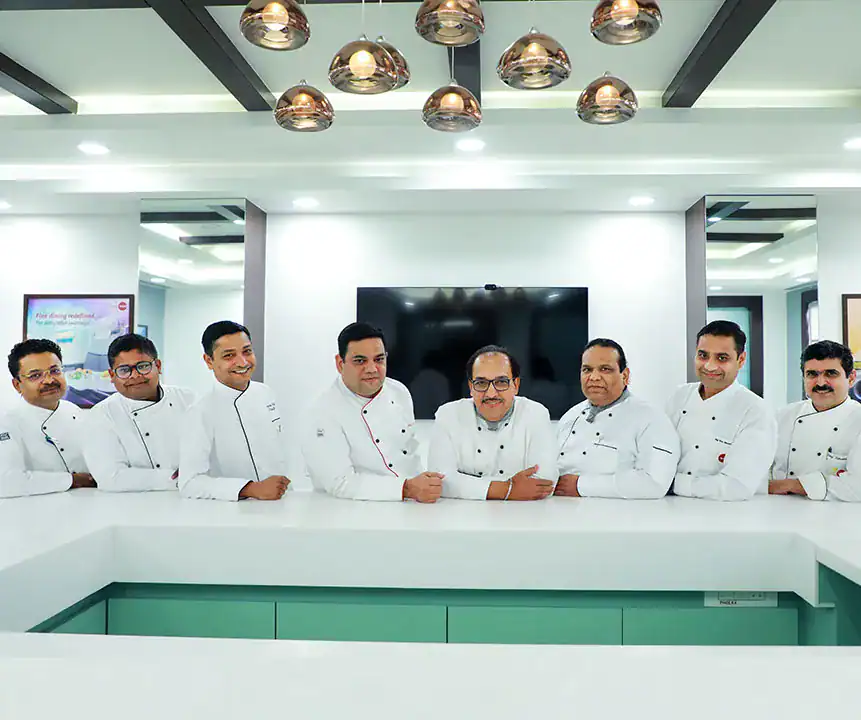
On the global front, LSG Sky Chefs, gategroup, and DO & CO represent three tiers of service. LSG Sky Chefs delivers volume and comprehensive services across geographies. Gategroup offers breadth and strategic integration after the LSG European acquisition. DO & CO operates at the other end of the spectrum, offering premium and bespoke culinary service tailored to luxury expectations.
All these players emphasise rigorous food safety, operational excellence, and adapting to the unique requirements of in-flight service, from menu engineering for altitude to logistical choreography in flight kitchens. Their continued innovation shapes how passengers experience cuisine at 35,000 feet, turning meals into memorable journeys.
Passenger Experience & Menu Storytelling
Airline catering today is not only about providing sustenance during a journey. It has evolved into a curated experience designed to reflect an airline’s brand identity, regional heritage, and service philosophy. The food tray is now a storytelling platform, and every element from the appetiser to the beverage list plays a role in shaping a passenger’s perception of the airline.
Premium airlines often weave menu design into their broader brand narrative. Menus are not simply lists of dishes but carry the stories of the ingredients, the regions they come from, and the chefs who create them. Passengers on long-haul flights with airlines such as Singapore Airlines, Emirates, and Qatar Airways frequently encounter menu descriptions that highlight the provenance of produce, artisanal preparation methods, or a chef’s personal inspiration for a dish.
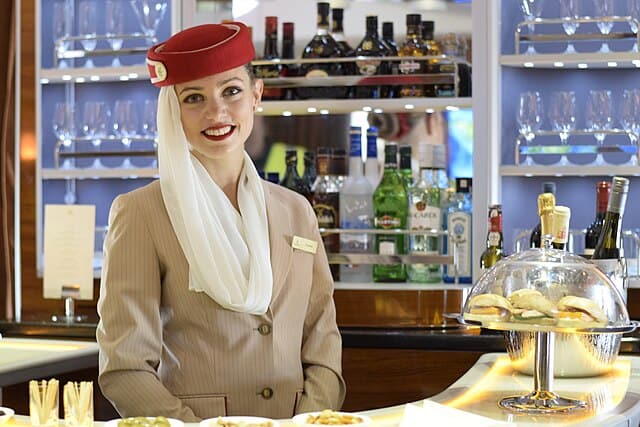
In India, carriers like Vistara and Air India are using this approach to distinguish themselves. Festival-themed menus during occasions such as Diwali or Onam, or seasonal specials that highlight regional Indian cuisines, give passengers a taste of home or introduce them to lesser-known delicacies. Such initiatives also serve as soft marketing, generating social media buzz and reinforcing the airline’s cultural connection to its audience.
Technology now plays a central role in enhancing the passenger dining experience. QR codes printed on menus or tray liners can link to videos of chefs preparing the featured dishes, interactive wine pairing guides, or virtual tours of the farms where key ingredients are sourced. This multimedia layer engages passengers beyond the act of eating, transforming the meal into an immersive brand interaction.
Pre-order services have also become more widespread. Passengers in premium cabins can often choose their meals days before the flight, ensuring the availability of their preferred option and giving caterers better forecasting data to reduce waste. In some cases, frequent flyers have their dining preferences stored in the airline’s system, allowing the crew to greet them with a personalised meal without the need for them to select it anew.
Even in economy class, storytelling can make a difference. Airlines are increasingly providing menu cards with photographs and short narratives, adding a sense of care and transparency to the dining experience. Simple gestures, such as naming a dessert after a regional speciality or explaining the origins of a signature bread, can elevate the perceived quality of the meal.
The emphasis on passenger experience extends beyond taste. Presentation is a key part of in-flight storytelling. Dishware, cutlery, and tray design are chosen not only for functionality but also for their alignment with the airline’s visual identity. This attention to detail ensures that the moment a passenger unfolds their tray table, they are stepping into an experience that has been thoughtfully crafted to match the airline’s brand promise.
In an increasingly competitive aviation market, the meal served on board is no longer a background service. It is a stage on which airlines can tell their story, celebrate their culture, and forge a lasting impression. When executed well, it turns a routine in-flight meal into a memorable part of the journey, often influencing a passenger’s decision to fly with the airline again.
India’s Unique Opportunity
India’s airline catering sector is at a turning point, with growing recognition that the country’s culinary heritage is not just a point of pride but also a powerful differentiator in the global aviation market. As Indian carriers expand their domestic and international networks, there is a unique opportunity to present the nation’s food traditions to a worldwide audience.
This is not limited to standard curries or rice dishes. The focus is shifting towards thoughtfully curated regional thalis, millet-led menus, and seasonal festival specials that reflect both authenticity and modern nutrition trends.
Regional thalis offer an ideal solution for in-flight service. They provide variety in a compact format, allowing passengers to sample multiple dishes that together tell a story about a region. A South Indian thali might include sambar, rasam, avial, curd rice, and appalam, each portioned in small bowls for easy service.
A Rajasthani thali could feature dal baati churma, gatte ki sabzi, ker sangri, and missi roti, while a Bengali spread might present shukto, cholar dal, luchi, and mishti doi. For long-haul premium cabins, these thalis can be adapted into fine-dining style plating, while in economy, they can be simplified without losing character.
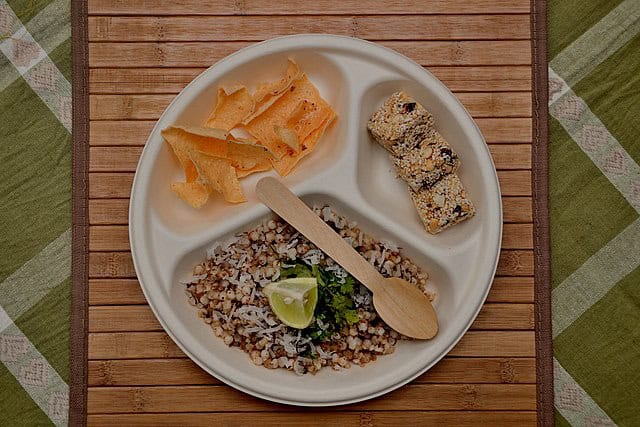
Millet-led menus align with both global wellness trends and India’s push to revive traditional grains. The United Nations declared 2023 the International Year of Millets, and Indian airlines are now integrating millets such as ragi, jowar, and bajra into in-flight meals.
Millet upma for breakfast, jowar roti wraps for light lunches, and bajra khichdi for main courses are proving to be both healthy and well-suited to altitude dining. Millets are naturally gluten-free, nutrient-rich, and retain their texture better than many refined grains after reheating, making them a smart choice for airline kitchens.
Festival specials are another area where India can stand out. The country’s calendar is filled with celebrations, each with its own signature dishes. Offering modaks and puran poli during Ganesh Chaturthi, payasam and banana chips for Onam, or gujiya and thandai for Holi can create memorable in-flight experiences.
These menus can be rotated throughout the year, ensuring repeat passengers are pleasantly surprised by seasonal changes. For international routes, such touches serve as cultural ambassadors, allowing foreign travellers to connect with India’s traditions before they even land.
Operationally, these initiatives require careful planning. Regional thalis demand diverse ingredient sourcing, while millets may require adjustments in cooking processes. Festival menus often involve items with shorter shelf lives or delicate textures, which must be adapted to the realities of blast chilling and galley reheating. However, India’s well-established catering infrastructure, led by companies such as TajSATS and Travel Food Services, is increasingly capable of managing this complexity.
By blending authenticity with innovation, Indian airline catering can move beyond generic international menus and showcase the country’s incredible food diversity. The combination of regional thalis, health-forward millet dishes, and culturally rich festival specials offers a competitive edge that few other markets can match. In doing so, India has the chance to make its in-flight meals a signature part of its aviation identity, both for domestic travellers and the world.
What’s Next for Sky Kitchens
Airline catering is evolving rapidly, and the next phase will focus on personalisation, sustainability, and innovation in menu design. Passengers are no longer satisfied with one-size-fits-all dining.
Airlines are moving towards allowing greater personalisation, where travellers can pre-select their meals, choose portion sizes, or customise certain elements before the flight. This not only improves satisfaction but also helps caterers plan more accurately and reduce waste.
Plant-forward menus are expected to play a central role. Global demand for plant-based eating is rising, driven by both health and environmental awareness.
Airlines are experimenting with menus that highlight vegetables, grains, legumes, and plant proteins as the star of the dish rather than a side. These menus appeal to vegetarians, flexitarians, and even meat-eaters looking for lighter options that work well at altitude.
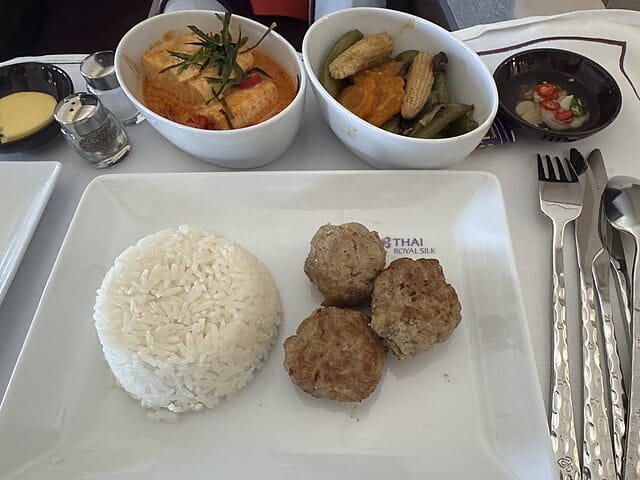
Alternative proteins, such as plant-derived meat substitutes or lab-grown meat, may become a regular feature in in-flight dining over the next decade. These products offer the flavour and texture of conventional meat while addressing concerns around sustainability, animal welfare, and resource use.
Sustainability will also drive the move towards zero-waste kitchens. This includes reducing single-use plastics, rethinking packaging, and designing menus that use every part of an ingredient to minimise discard. Airlines and catering companies are investing in closed-loop systems to recycle, compost, or repurpose waste, creating a more responsible supply chain.
The sky kitchen of the future will be defined by its ability to balance taste, health, and environmental stewardship while delivering a memorable dining experience at 35,000 feet.
Top Players in Airline Catering
Indian Champions in Airline Catering
TajSATS Air Catering
- TajSATS Air Catering is India’s largest airline caterer with 45+ years of expertise, operating 9 kitchens in major cities.
- Mumbai facility alone makes ~50,000 meals daily with AI-enabled food safety systems.
- FY24 revenue: ₹900 crore; target: ₹1,040 crore.
Sky Gourmet
- Strong presence in Mumbai, Delhi, Bengaluru, serving domestic & international carriers.
- Specialises in regional, European, and pan-Asian menus with customisation flexibility.
- Focus on hygiene protocols and cold chain management.

Ambassador Sky Chef
- Known for bespoke VIP, charter, and premium carrier menus.
- Expertise in last-minute changes, fine plating, and exclusive diets.
- Works closely with airlines on business & first-class menu design.
ChefAir
- Serves both budget and full-service airlines with versatile offerings.
- Compact, ready-to-eat packs for LCCs; broader menus for premium carriers.
- Strengths in batch production, rapid turnaround, and cost-efficient catering.
Travel Food Services (TFS)
- Combines in-flight catering with airport lounges, cafes, and outlets.
- Offers multi-cuisine, seasonal, and festival-based menus.
- Integrated sourcing and logistics improve efficiency and quality.
Leading International Caterers
LSG Sky Chefs
- Operates in 50+ countries, serving 300+ airlines with millions of meals yearly.
- Offers catering, lounges, logistics, and retail food solutions.
- Adapts menus to local tastes with advanced safety systems.
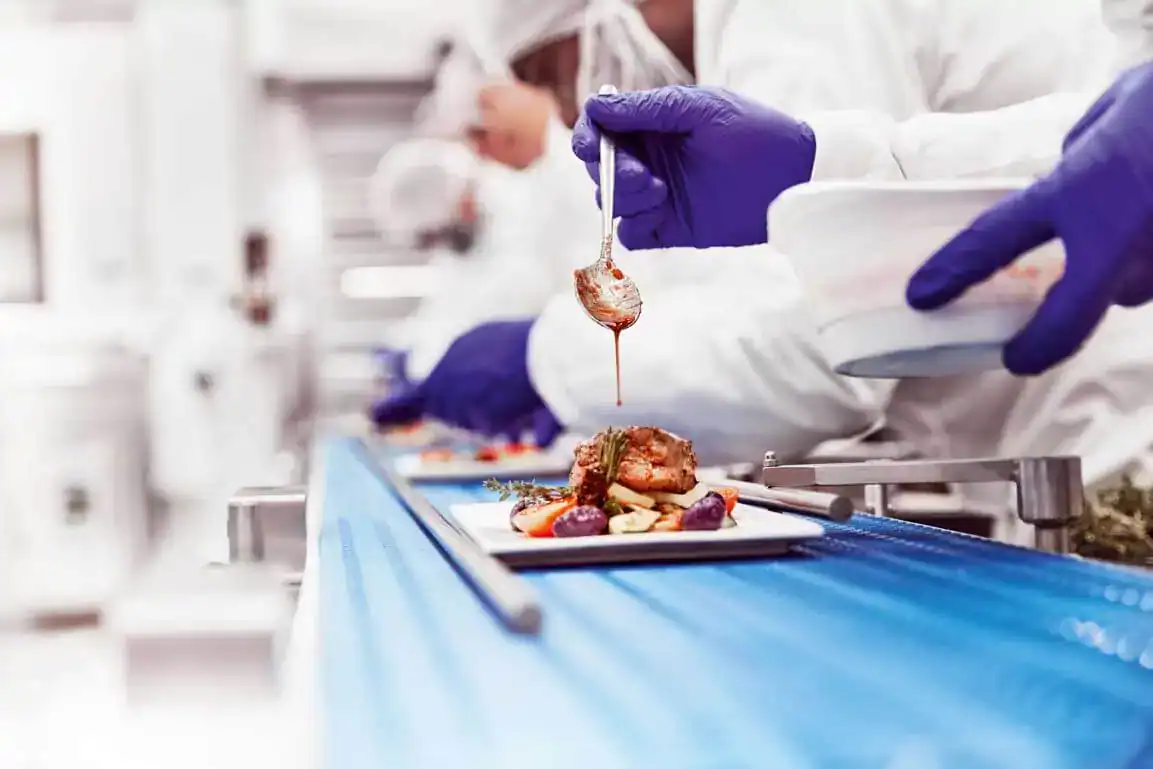
Gategroup
- Global leader in 60+ countries, serving 700M+ passengers annually.
- Flagship: Gate Gourmet, plus retail & branding services.
- Expanded via LSG’s European operations, strengthening premium hubs.
DO & CO
- Boutique luxury caterer for Emirates, Turkish Airlines, Austrian Airlines.
- Focus on restaurant-level meals, seasonal menus, fine patisserie.
- Cross-pollinates expertise via restaurants, hotels, and global event catering.
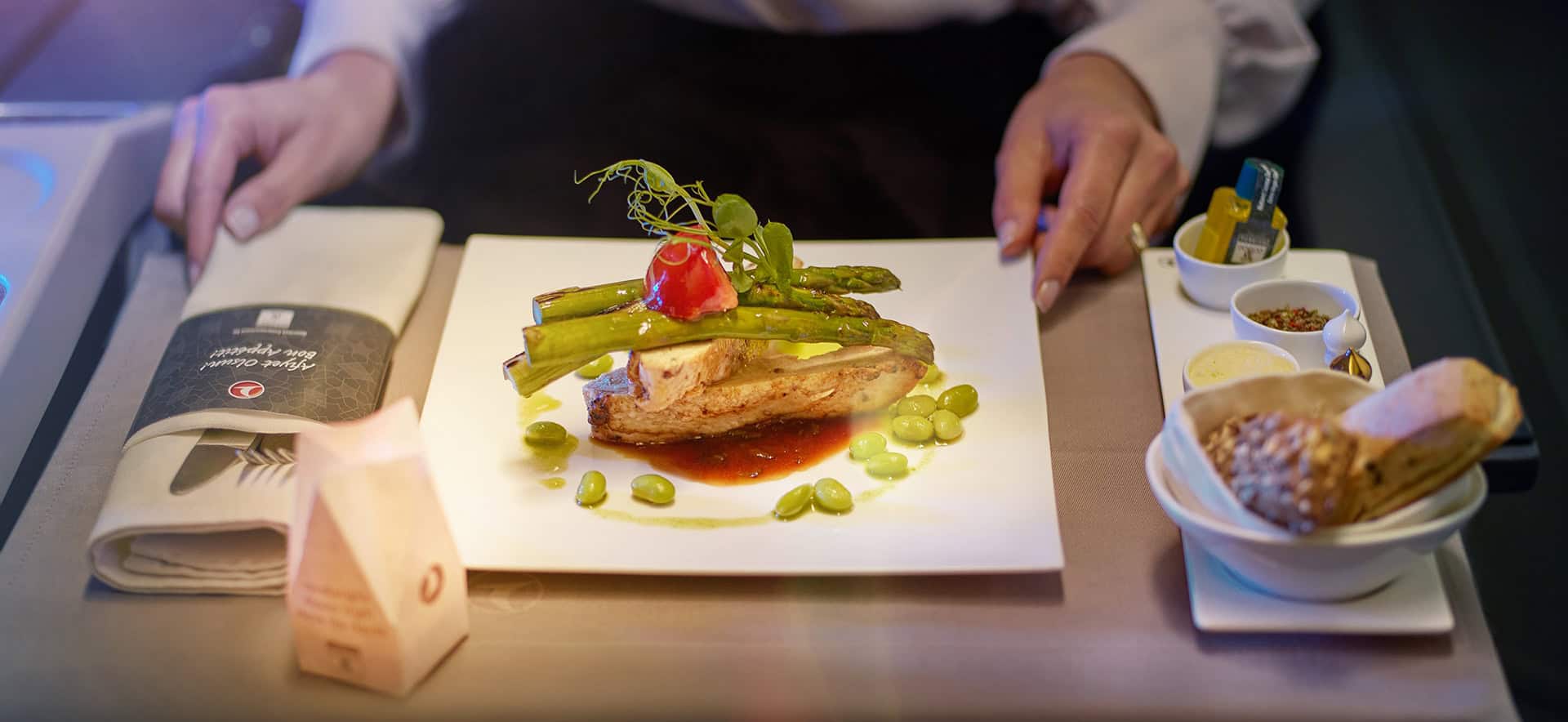
Read More: Latest



